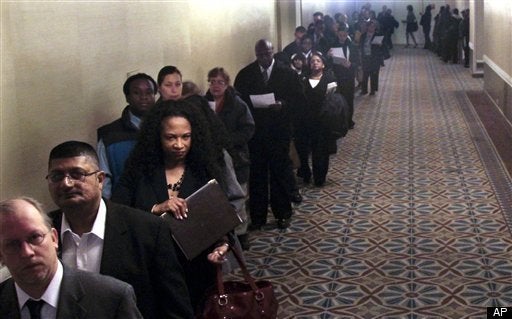
Remember last Friday's payrolls numbers -- the ones that blew away expectations about the number of jobs created and got everyone talking about recovery again?
Well, even at the time those payroll numbers were confusing, because the other part of the jobs report -- the "household survey" -- showed yet another crappy number. But by pointing to the crappy household number and ignoring the payroll number, the bears seemed to be trying to make lemons out of lemonade.
But it turns out that there was a simple reason why the payroll numbers looked so good -- a reason that had nothing to do with underlying strength of the jobs market. What was that reason?
The government changed the "seasonal adjustment" it made to the payroll numbers -- and, in so doing, boosted the number of "jobs" created in October by 100,000.
Stephanie Pomboy of MacroMavens (via John Mauldin) explains:
"The seasonal bar which the payroll data must jump was (inexplicably and dramatically) lowered from prior Octobers.
"Thus, in October 2009, the BLS set the bar at 870,000 jobs, similar to the 840,000 it anticipated in October 2008. This year, by contrast, it lowered the bar to 768,000. Mumbo, jumbo, payrolls presented "an upside surprise" of 100,000."
Alan Abelson of Barrons (again via John Mauldin) adds the following:
"According to John Williams at Shadow Government Statistics, the BLS' fiddling with the figures via what he calls 'seasonal-factor games' actually created 200,000 phantom jobs last month. John cites such finagling as the reason his prediction of an October decline and a rise in the jobless rate was wrong. It also explains why seasonally adjusted payrolls were revised upward by 110,000 in September, including 56,000 in August."
In other words, it wasn't that there were a surprising number of jobs created in October. It was that the government changed its "seasonal adjustment" assumption in a way that made it look as though there were a surprising number of jobs created in October.
Now, seasonal adjustment is an art not a science. And maybe the new seasonal adjustment is more defensible than the old one. But if our government is going to publish a number like this that represents such a major "surprise," we would expect it to at least be upfront about the reasons for the surprise. And in this case those reasons had NOTHING to do with the jobs market, and EVERYTHING to do with the seasonal adjustment assumption.